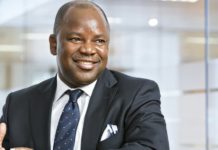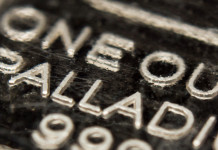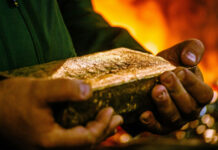
[miningmx.com] — MINING used to be a simple game. No scoping, pre-feasibility, bankable feasibility and goodness know what studies.
You drilled some holes, made some extrapolations, sunk a shaft and hoped for the best. Most of the time it worked out okay – if it didn’t you lost your boots.
But now everything is so complex that fund-raising documents can extend over hundreds of pages of tightly packed statistics. But however much you can reduce the risk, you can never be sure that what’s supposed to be down there is actually down there.
And recent events confirm just how risky a business mining still is.
Take Neal Froneman’s departure as CEO of Uranium One, a company I was foolishly for some time quite bullish about. The official line – that it was nothing untoward – is as convincing as Alec Erwin’s line that the electricity crisis is a consequence of greater-than-expected economic growth.
If Froneman’s departure had been long in the making there would be some succession plan, which there clearly isn’t.
Fact is, no chief executive can survive as many downgrades of actual or planned production as have been put out in respect of Uranium One’s Dominion mine.
Uranium One simply has a huge credibility gap that Froneman could never fill.
While the interim CEO, the well-respected Jean Nortier, has denied media reports that Dominion has claimed a resource base much higher than previous owners of the property had delineated, I still think it’s odds on that Dominion may never reach the planned output levels.
I see that Froneman plans to stay on at the helm of Uranium One’s subsidiary Aflease Gold. I wish him luck, but would advise him to keep his back close to the wall.
Then there’s another of Bernard Swanepoel’s swans that have turned to geese – the sale of the Orkney shafts to Pamodzi Gold.
That was touted as a model, whereby Harmony could pass low-priority assets over to those who could better exploit them while keeping an interest in the upside.
Well, it’s certainly achieved the last objective, but hardly in the way envisaged.
The buying price has been slashed from R1bn (itself a dubious figure, as only R550m was assured) to R300m, but where Harmony was originally to get R350m cash up front it’s now taking the whole R300m in shares, meaning it will be at risk not just at Orkney but also on Pamodzi’s entire suite of loss-making operations.
Indeed, Harmony will now become Pamodzi’s biggest shareholder, with 32.4% until it either sells its shares or Pamodzi’s previous controlling shareholder Pamodzi Resources takes up more shares to finance the capex programme.
The terms were altered, we’re told, due to changed economic, operating and market conditions. Well, as Gold Fields’ head of local operations, Terence Goodlace, plaintively remarked on that company’s latest conference call, the rand gold price is the highest it’s ever been, so market conditions would justify an increase in the price.
Of course, there’s Jacob Zuma and the price of electricity. However, I wouldn’t mined betting that “operating’ is the key work and that the Orkney assets turned out not to be all they were made out to be.
And so to Gold Fields and its latest South Deep setbacks.
An “underachievement’ of the feasibility study compiled by the previous joint venture owners, production and grade shortfalls, inadequate infrastructure and the Ventersdorp Contact Reef running out 18 months sooner than expected.
To achieve 71% of planned production with 105% of planned total production costs is, bluntly, a disaster and those who always reckoned Gold Fields was buying a pig in a poke must be smiling.
No wonder Gold Fields is completely revamping its mining strategy.
Meanwhile, reduced output will have huge impact on costs.
When I read the figures in the presentation, I thought there must be a misprint. But Goodlace repeated them: cash costs up from R147,700/kg in the December quarter to R237,200/kg in March, R250,000 in June and then a “steady state’ R160,000/kg.
“Steady state’ presumably means for the next 18 months or so until, hopefully, the next R1bn Gold Fields is throwing into the bottomless pit starts to pay off.
The need to restructure South Deep has, in effect, meant that the 9 Shaft project designed to extend Driefontein’s life by 10 years to 2035 has been deferred. And you can be sure that when it’s revived, its costs will escalate from the current R5.4bn as well.
It’s just as well the rand gold price is as record levels of R230,000/kg as I write. Until late last year it was around R150,000/kg. If that still prevailed, South Deep would run at a “steady state’ loss. I wonder what Gold Fields’ response to that would have been.
As it is, it may still show a loss in the six months to June, but amazingly, a profit thereafter. But as I said at the outset, it all goes to confirm just what a risky business mining remains.











